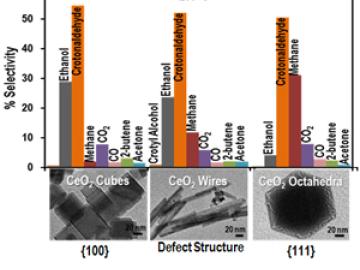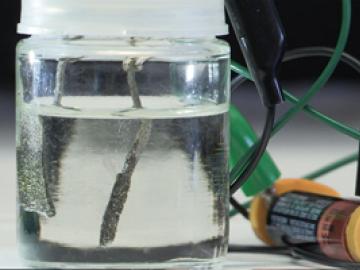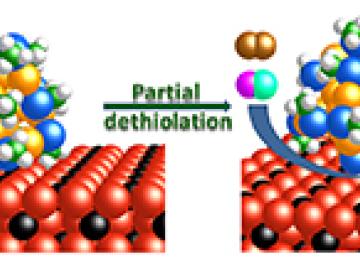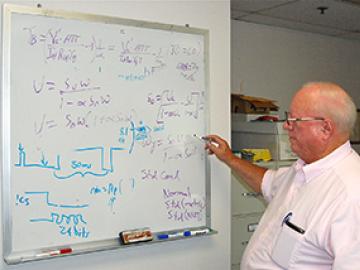ORNL's Communications team works with news media seeking information about the laboratory. Media may use the resources listed below or send questions to news@ornl.gov.
851 - 860 of 882 Results

Researchers at the Department of Energy’s Oak Ridge National Laboratory got a surprise when they built a highly ordered lattice by layering thin films containing lanthanum, strontium, oxygen and iron. Although each layer had an intrinsically nonpolar (symmetric) distribution of electrical charges, the lattice had an asymmetric distribution of charges. The charge asymmetry creates an extra “switch” that brings new functionalities to materials when “flipped” by external stimuli such as electric fields or mechanical strain. This makes polar materials useful for devices such as sensors and actuators.

Scientists at the Department of Energy’s Oak Ridge National Laboratory have discovered they can control chemical reactions in a new way by creating different shapes of cerium oxide, a rare-earth-based catalyst.

In 2015, American consumers will finally be able to purchase fuel cell cars from Toyota and other manufacturers. Although touted as zero-emissions vehicles, most of the cars will run on hydrogen made from natural gas, a fossil fuel that contributes to global warming.

depth, population-based approach to identifying such mechanisms for adaptation, and describes a method that could be harnessed for developing more accurate predictive climate change models. For the U.S. Department of...

If such a designation existed, Nazanin Bassiri-Gharb would be on the fast track to becoming an Oak Ridge National Laboratory “super user.” Her research on nanoscale materials has taken her all across the ORNL campus, from scanning probe and electron microscopes at the Center for Nanophase Materials Sciences to neutron reflectometry at the Spallation Neutron Source and radiation equipment in the Materials Science and Technology Division.

Old thinking was that gold, while good for jewelry, was not of much use for chemists because it is relatively nonreactive. That changed a decade ago when scientists hit a rich vein of discoveries revealing that this noble metal, when structured into nanometer-sized particles, can speed up chemical reactions important in mitigating environmental pollutants and producing hard-to-make specialty chemicals.

In the early 1980s, the Department of Energy’s Oak Ridge National Laboratory was just beginning to explore transfer of technology from the lab to industry. Now it's the norm, and one historical example illustrates the long-term benefits.

The Spallation Neutron Source at the Department of Energy’s Oak Ridge National Laboratory broke records for sustained beam power level as well as for integrated energy and target lifetime in the month of June.

The Smithsonian Institution and the Department of Energy’s Oak Ridge National Laboratory have announced a new partnership to support collaborative research programs and science education efforts. This is the first partnership between Oak Ridge National Laboratory and the Smithsonian, which was formalized during the signing of a memorandum of understanding June 12.

From antiseptic oils to the construction of didgeridoos, the traditional Australian Aboriginal wind instrument, the eucalyptus tree serves myriad purposes, accounting for its status as one of the world’s most widely planted hardwood trees.

